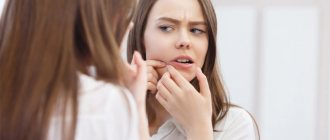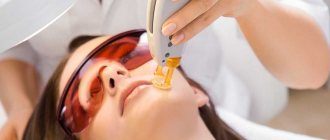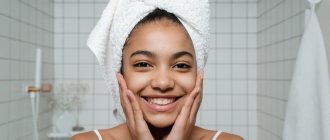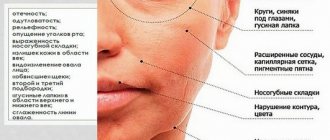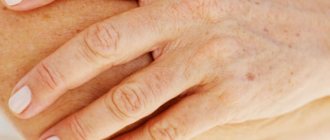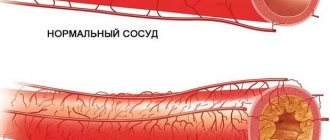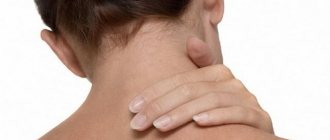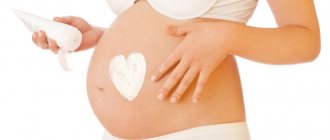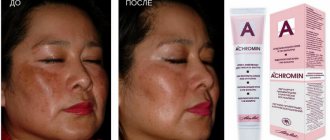Pigment spots on the face and body for a woman often become a cause of psychological discomfort and self-doubt. But in modern cosmetology there are many effective methods for treating age spots that help a woman save her nerves and preserve her image.
Types of age spots
There are several types of age spots:
- Freckles are the most common and safest age spots; they arise due to the inability of a young body to distribute sun tan evenly throughout the skin. During the cold season they disappear and appear again in the spring. With age, the sun tan usually begins to spread evenly and freckles disappear completely.
- Lentigines are age spots on the face, arms, back and shoulders. They appear after 40 years, as a rule, in those places where there were freckles in youth. They reveal their real age, which is why women try to get rid of them.
- Melasma (chloasma) is pigmentation during pregnancy, which manifests itself as a result of hormonal imbalance in the body as a result of bearing a child. Once the hormonal balance is restored, the spots disappear on their own.
- Birthmarks (moles) are age spots that can be congenital or acquired with age. The reason for their appearance is a disruption in the functioning of the skin and the accumulation in one place of cells overflowing with pigment. Moles are considered benign tumors, which under unfavorable circumstances can become malignant.
- Vitiligo is pinkish or milky-white pigment spots that can form at any age. Their exact origin has not yet been clarified by science; it is believed that their appearance is provoked by a failure of the endocrine system.
Pigmentation: causes of appearance
- The appearance is caused by excessive exposure to ultraviolet rays on human skin, as a result of which an excess amount of melanin accumulates in the skin.
- Pigmentation appears in the form of small spots on the skin, most susceptible to ultraviolet rays in the summer.
- Most often we encounter pigmentation in the form of formation (darkening) of a certain area of the skin in the form of a spot or spots. They can be of different sizes, shapes and colors - from pale yellow (coffee stains) to dark brown (chloasma, melasma).
- People with the third and fourth skin phototypes experience the greatest discomfort from the appearance of age spots.
- Pigment spots may also appear on the skin of the fifth and sixth phototypes, but due to its special dark complexion, such a defect appears invisible to the human eye.
- It is easiest for people with the first skin phototype, because their body practically does not produce melanin, so the appearance of dark brown spots on skin of this type is almost impossible.
- However, there are cases when a person with the first skin phototype and red hair also develops pigment spots that have a light brown or yellowish tint.
Causes of age spots
Before choosing stain removal products, you need to understand their type and reasons for their appearance. Skin pigmentation is possible at any age, the most common causes are:
- hormonal changes in the body - pregnancy, prolonged use of certain medications or contraceptives, use of cosmetics of dubious quality;
- age over 40, due to the loss of cells’ ability to stop the production of pigment, menopause can also lead to hormonal imbalance and aggravate the situation;
- gynecological diseases - ovarian dysfunction, inflammatory diseases of the genital organs;
- diseases of the liver and biliary tract;
- dysfunction of the thyroid gland;
- nervous and chronic diseases;
- work in hazardous chemical industries and in workshops with elevated temperatures;
- vitamin C deficiency;
- contact with skin of aggressive substances;
- use of ointments and creams that irritate the skin;
- consequences of injuries of various origins: removal of tumors on the skin, squeezing out acne, use of cauterizing agents, etc.;
- as a result of friction or pressure of any objects (on the body - belts, garters, etc.);
- exposure to sunlight.
The sun plays a huge role in the appearance of age spots. In spring, freckles become the most noticeable; they are scattered across the skin in the form of small oval or round spots. Their peculiarity is that they have a yellowish-brown color and do not merge with each other. To avoid negative sun exposure, facial skin in spring and summer should be protected and try to avoid direct sunlight. When vacationing in the south, you need to select protective products - cream, milk, etc. - individually, depending on the characteristics of your skin. Only in this case can you expect an effect from using the funds. Creams like “tanning without tanning”, etc. will help get rid of age spots that have appeared.
Improperly performed facial skin care procedures can also cause skin pigmentation. For example, hyperpigmentation can be caused by improperly performed facial cleansing, using scrubs and peeling creams without taking into account the time of year. Applying perfumes and other perfumes to exposed skin can also cause skin pigmentation. The essential oils included in their composition increase the skin's sensitivity to sun exposure. The result may be the appearance of photodermatitis followed by pigmentation. The composition of lipstick or blush may also not suit your skin.
Pigment spots often appear during pregnancy. Some women develop chloasma from the very early stages - pigment spots with a sharply defined irregular contour. They last during pregnancy and for some time after childbirth, sometimes they can persist for several years.
When treating freckles and chloasma during pregnancy, only weakly active substances are allowed. Although the duration of treatment increases due to a decrease in effectiveness, the skin does not suffer from the effects of the drugs. When carrying a child, the use of products containing mercury, salicylic acid, green soap and hydroquinone is contraindicated due to the possibility of their negative effects on the mother’s body and the condition of the fetus.
Pigment spots on hands
If pigment spots on the face can be hidden with makeup, and on the legs they can be hidden under tights or trousers, but with the hands it is more difficult; there is nothing to hide the spots on them. A person's true age is often revealed by his hands. The back of the hands is most susceptible to sun exposure; it is there that age-related skin pigmentation begins earlier than on other parts of the body. With age, entire zones of hyperpigmentation may appear on the hands, called “solar lentigo” (liver or age spots). Such lentigo appears in middle age as a result of regular exposure of the skin to solar radiation. Areas of lentigo remain dark, even if the tan on the skin fades. This occurs due to ultraviolet damage to the cells responsible for the production of melanin. Melanocytes located deep in the skin eventually form dark areas called age spots. Despite being harmless at first glance, age spots can cause many aesthetic problems for a woman.
Price for pigmentation treatment
- BBL /BBL photorejuvenation at the gene level
Read the terms of the promotionSKIN PHOTOTHERAPY BENEFIT UP TO 25% Area of influence Specialist. price, rub. price, rub. Forehead 5 900 Face 14 900 19 900 Neck 11 950 15 950 Cleavage 14 900 19 900 Face+Neck 20 200 26 900 Face+Neck+Décolleté 26 950 35 900 Cheeks 9 900 Chin 5 900 Hands 8 200 10 900 Forearms 13 450 17 900 Back (subscapular area) 12 900 Back (to the end of the shoulder blades) 15 900 Full back 23 900 31 500 One flash 500 ACNE TREATMENT FOREVER CLEAR Face 13 450 17 900 Cheeks 7 500 9 900 Shoulders 12 900 Back 14 950 19 900 Neckline/chest 12 650 16 900 Zone 10 cm* 10 cm 12 900 REMOVAL OF VESSELS AND ROSACEA Forehead 5 900 Cheeks 9 900 Nose 5 900 Chin 6 900 Face 19 900 1 category / 1 zone 11 950 15 900 PHOTO REJUVENATION FOREVER YOUNG Area of influence Specialist. price, rub. price, rub. Face 24 700 32 900 Neck 20 200 26 900 Cleavage 23 170 30 900 Hands 14 200 18 900 Forearms 19 800 Face+Neck 37 500 49 900 Face+Neck+Décolleté 48 700 64 900 LIFTING SKIN TYTE Face/lower third 14 900 19 900 Full face 25 100 Neck 18 700 24 900 Cleavage 21 900 Face + neck 31 200 41 900 Face + neck + décolleté 41 200 54 900 Cheeks 15 100 Hands (pair) 12 700 16 900 Inner surface of hands (pair) 22 900 Elbows (pair) 11 900 15 900 Inner thigh (pair) 29 900 Belly (upper zone) 16 900 Belly (lower zone) 18 900 Full belly 26 900 35 800 Patellar region 14 900 19 900 Make an appointment
- FRAXEL RE:STORE / Fraxel fractional thermolysis
Read the terms of the promotionArea of influence Specialist. price, rub. price, rub. Fractional facial peeling 17 300 Face, including eyelid area 26 300 Face without treatment of upper and lower eyelids 22 300 Upper or lower eyelid area 10 300 Forehead 11 300 Temple area 5 300 Cheek area 6 300 Chin 8 300 Cheeks 16 300 Neck 17 300 Cleavage 18 300 Face+neck 35 300 Face + eyelids + neck + décolleté 49 400 Hands 14 300 Other areas of the body 100 per 1cm2 Scar correction / length 1cm 1 500 Anesthesia, 15 gr. 1 500 * Anesthesia is not included in the price
Make an appointment - Consultations and doctor appointments
Name of service Specialist. price, rub. price, rub. Initial consultation with a dermatocosmetologist / 30 minutes 1 950* Consultation with a dermatocosmetologist / up to 60 minutes 3 500 Consultation with a physiotherapist / 30 min FOR FREE 1 950 Initial appointment with a dermatovenerologist 2 900 Initial appointment with a dermatovenerologist/trichologist (including trichoscopy) 3 500 Repeated appointment with a dermatovenerologist/trichologist (without trichoscopy) 1 500 Repeated trichoscopy 1 250 * Consultation is included in payment for procedures on the day of treatment or within 7 days!
Make an appointment
Traditional methods
1. Chop fresh parsley, add 1 liter of boiling water, leave for several hours. Strain the resulting cooled infusion through cheesecloth and wipe your face twice a day. You can also moisten a napkin with the infusion and keep it on your face for at least a quarter of an hour, then wash with cool water. 2. Lemon juice (50 g) in half a glass of water, wipe your face throughout the day. You can also mix potato starch with lemon juice, apply the resulting mask to your face for 15 minutes, then rinse with cool water. 3. Peel a medium fresh cucumber, pour a glass of hot water over the peel and leave for 5-6 hours. Wipe pigmented areas with cucumber infusion throughout the day. You can also wipe your face with regular fresh cucumber juice if the pigmentation is shallow. 4. Mix 10 g of vegetable oil with 10 ml of milk and dry bran. Add grated medium-sized raw potatoes to the resulting mixture. Apply the mask to the face for 15-20 minutes. 5. Cut a medium-sized onion into several pieces. Apply a thin layer of cream to your face, then wipe the skin with the released onion juice. Wait until dry, rinse with cool water. 6. Mix bodyagu and any cosmetic clay in equal proportions, add warm water and stir until the consistency of sour cream. Wash off the mask with cool water after a quarter of an hour. You can also mix 30 g of bodyaga and 20 ml of hydrogen peroxide and apply to age spots. Wash off after 10 minutes. 7. Squeeze the juice from the celandine onto a cotton pad or gauze and wipe problem areas on the face and neck. 8. Apply a 4% salicylic acid solution to a cotton pad and apply to age spots for 10 minutes (no more). Rinse with water. Before you begin to remove age spots yourself, you should consult a doctor to find out the reasons for their origin, as well as to identify contraindications.
Types of pigmentation
- chloasma. They have different color shades, differ in geographical outlines, and are most often located on the cheeks and on the skin of the forehead.
- Melasma. General name for pigmentation on the face
- post-traumatic hyperpigmentation. Occurs due to the influence of two factors: after acne and as a result of complications caused by harsh or aggressive effects on the skin (including as a result of cosmetic procedures, for example, chemical peels)
- solar and age-related lentigo
- lentigo and coffee spots
- common freckles (ephelides)
- natural hyperpigmentation, which is observed in women with the fourth, fifth and sixth skin phototypes.
Symptoms of age spots
The main symptoms of age spots:
- formation on the skin of flat colored zones of light brown, gray, reddish, black colors;
- the spots usually take on an oval shape;
- spots that are located in places that are most exposed to sunlight (on the forehead, arms, shoulders, back, forearms, etc.);
- As a rule, age spots are located in groups;
- skin aging;
- dryness of the epidermis;
- deep wrinkles, creases;
- roughening of the skin.
Pigment spots should be distinguished from, for example, flat moles, warts, and lentigo maligna.
If you experience similar symptoms, consult your doctor
. It is easier to prevent a disease than to deal with the consequences.
Recommendations before and after the procedure
- After the procedure, a small crust appears at the site of laser exposure. When it is naturally rejected, slight inflammation or weeping areas of the skin may occur. Under no circumstances should you remove any emerging formations on your own or try to speed up the natural regeneration processes in any way. If you ignore the doctor's recommendations, the wound may become infected and become inflamed, which can lead to the formation of a scar at the site of pigmentation.
- Before the procedure, it is important not to injure and protect the skin from various negative influences: avoid sunlight, do not use scrubs, peels and other traumatic cosmetics.
- In the first days after the procedure, it is important to follow the following recommendations:
- Keep the treated area of skin as intact as possible, avoid contact with water, dirt, and do not use cosmetics.
- Do not scratch the areas of skin treated with laser, do not remove the crust that appears on your own, do not use peelings and scrubs.
- Avoid ultraviolet (solarium and direct sunlight) and thermal (sauna) exposure.
- Do not use any healing products without a doctor's prescription.
- Follow the doctor’s instructions and use prescribed regenerating creams, ointments, vitamin complexes
- Do not forget about sunscreens with a high protection factor (the composition should contain zinc oxide).
Whitening creams
Before using a whitening cream containing mercury, consultation with a doctor is required, since uncontrolled self-medication can lead to very disastrous results: both mild cosmetic damage to the skin and more serious problems associated with allergic reactions are possible. In case of contraindications, products based on hydrogen peroxide or salicylic alcohol can be a worthy replacement for such creams. But they have one significant drawback - a short shelf life - after 10 days the preparations lose their whitening properties. Dermatologists recommend choosing whitening ointments based on fatty creams. It is better to cleanse the skin using cleansing lotions or sour milk. Washing with plain water during treatment is highly undesirable.
Before and after results
Telos Beauty Clinic specialists prof. They have been eliminating age spots for more than 12 years and have accumulated extensive practical experience, which allows them to carry out comprehensive treatment of pigmentation to help each patient.
Don’t be ashamed of yourself, because in order to transform, you only need to take one step and sign up for a consultation at our clinic.
Lightening cosmetics: composition and principle of action
To destroy accumulated melanocytes (the culprits of pigmentation), cosmetic products include:
- strong acids:
- koyaeva;
- azelaic;
- hyaluronic;
- gluconic;
- glycolic;
- titanium dioxide;
- extracts from:
- parsley;
- cucumber;
- lemon;
- skullcap;
- saxifrage;
- burgundy grapes;
- mulberries;
- beta-carotene;
- vitamin C;
- snail mucus extract;
- grape seed and jojoba oil;
- antioxidant hydroquinone;
- glycoside arbutin from bearberry and blackberry leaves;
- whitening and anti-inflammatory glabridin.
Whitening cosmetics, also referred to as whitening, will help:
- completely get rid of pigmentation or lighten the skin well;
- prevent the accumulation of melanin;
- slow down the process of formation of age spots;
- weaken the intensity of melanocytes;
- destroy the coloring flavanoid.
After active use of lightening cosmetics after 14 days:
- facial tone will be evened out;
- skin color will improve;
- a natural and attractive blush will appear;
- pigmentation will fade or disappear;
- the tan will lighten.

